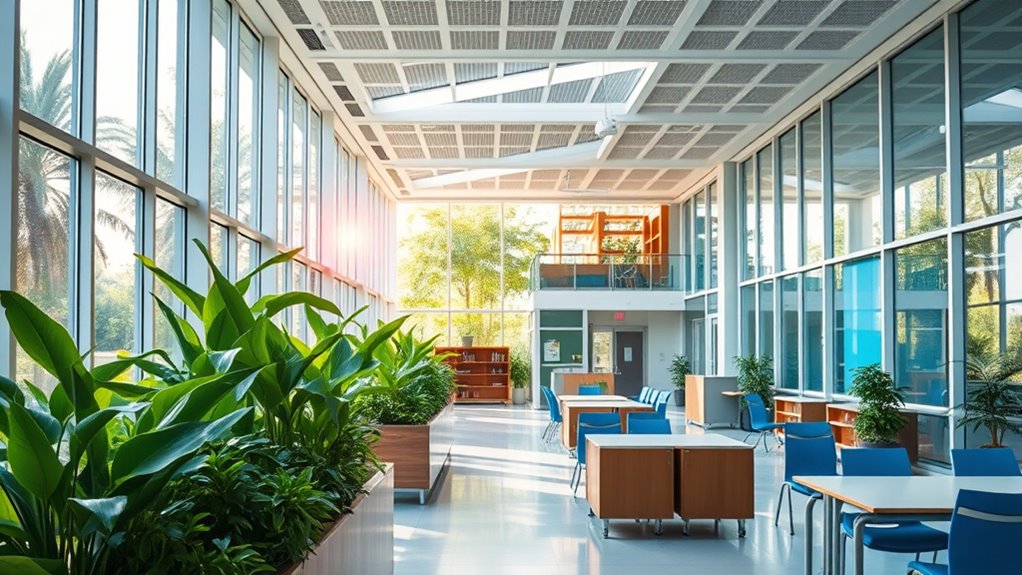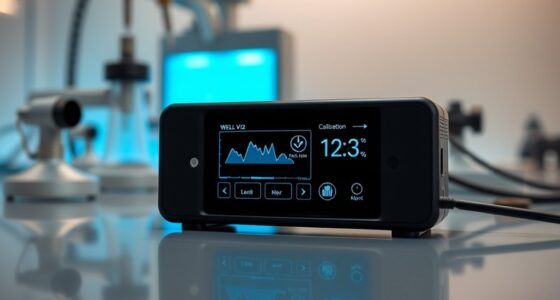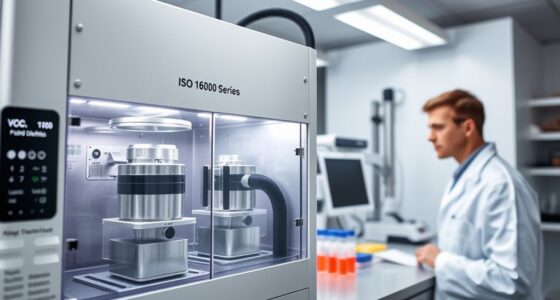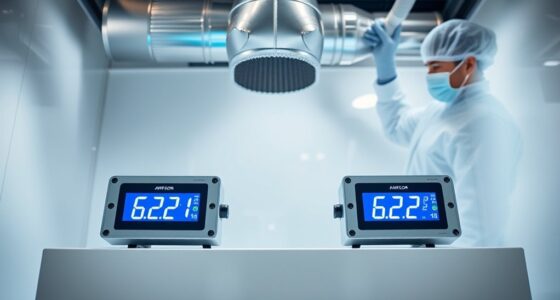Certification pathways like LEED, WELL, and Fitwel help you demonstrate your school’s commitment to sustainability, health, and well-being. LEED focuses on eco-friendly design and reducing environmental impact, while WELL and Fitwel prioritize indoor air quality, lighting, and overall health-friendly environments. Combining these standards supports a holistic approach that benefits students, staff, and the planet. If you want to learn more about how these certifications can transform your school, keep exploring the options available.
Key Takeaways
- Schools can pursue multiple certifications simultaneously to address sustainability, environmental health, and overall well-being.
- LEED focuses on sustainable design, energy efficiency, and reducing environmental impact in school buildings.
- WELL and Fitwel emphasize indoor air quality, lighting, acoustics, and mental health to promote healthier learning environments.
- Certification pathways involve strategic planning, documentation, and collaboration with architects, engineers, and health experts.
- Combining certifications creates a holistic approach that enhances sustainability and environmental health for long-term benefits.

Achieving certification is a vital step for schools aiming to demonstrate high standards of quality and continuous improvement. When pursuing recognition through programs like LEED, WELL, or Fitwel, you’re not just enhancing your institution’s reputation—you’re actively creating a healthier, more sustainable learning environment. For LEED certification, sustainable design plays a central role. It encourages you to incorporate energy-efficient systems, sustainable materials, and innovative construction practices that reduce your school’s environmental footprint. By focusing on sustainable design, you help lower operational costs and minimize waste, all while providing a more comfortable, resilient space for students and staff. This approach aligns with your goal of promoting environmental health, as it guarantees the building’s design supports clean air, natural light, and safe materials, which are essential for students’ well-being and learning outcomes.
Achieving sustainability certifications fosters healthier, more resilient learning environments through eco-friendly design and improved indoor conditions.
Environmental health is at the core of the WELL and Fitwel certifications. These programs emphasize the importance of indoor air quality, lighting, acoustics, and overall indoor environmental conditions. You’re encouraged to implement strategies like improved ventilation systems, low-emitting materials, and biophilic design elements that foster a healthier atmosphere. Prioritizing environmental health means reducing pollutants and allergens that can compromise students’ health or distract from learning. It also involves designing spaces that support mental health and well-being, recognizing that a healthy environment directly impacts student engagement and academic success.
When working towards these certifications, you’ll find that they often overlap, offering a holistic approach to school improvement. For example, sustainable design elements in LEED projects often complement WELL and Fitwel strategies by creating environments that are both environmentally responsible and conducive to health. You’ll need to monitor and document your efforts, from energy consumption reductions to air quality improvements, to meet certification standards. This process may involve engaging with architects, engineers, and health experts to guarantee your project aligns with best practices in sustainability and environmental health.
Ultimately, pursuing these certifications demonstrates your commitment to providing a safe, healthy, and sustainable environment for your students and staff. It signals that your school values not only academic achievement but also the well-being of everyone within its walls. Achieving these standards requires dedication and strategic planning, but the benefits—ranging from reduced environmental impact to improved student health—make the effort worthwhile. By prioritizing sustainable design and environmental health, you’re setting your school on a path of continuous improvement and excellence.
Frequently Asked Questions
How Do Certification Costs Vary Between LEED, WELL, and Fitwel?
You’ll find the cost comparison among LEED, WELL, and Fitwel varies based on project scope and certification level, influencing your budget planning. LEED generally has higher costs due to extensive documentation and third-party reviews, while WELL and Fitwel tend to be more affordable and faster to achieve. Understanding these differences helps you allocate resources effectively, ensuring your school meets sustainability and health standards without exceeding your financial limits.
What Are the Typical Timelines for Achieving Each Certification?
You can expect LEED certification to take around 6 to 12 months, depending on construction timelines and stakeholder engagement. WELL certification often requires 9 to 15 months, as it emphasizes health and wellness features, needing more detailed documentation. Fitwel typically takes 3 to 6 months, with quicker approval if stakeholder engagement is smooth. Your project’s complexity and team involvement directly impact these timelines.
Can Schools Pursue Multiple Certifications Simultaneously?
Yes, you can pursue multiple certifications simultaneously by adopting multi-credential strategies to maximize efficiency. Be aware of certification overlap, which can streamline efforts and reduce redundancy. Planning these pathways together helps you coordinate documentation and timelines, saving time and resources. By integrating your efforts, your school can achieve LEED, WELL, and Fitwel certifications more effectively, showcasing an all-encompassing commitment to sustainability, health, and wellness in your learning environment.
Are There Specific Certifications Tailored for Different School Types?
Yes, there are certifications tailored for different school types, focusing on specialized curricula and student engagement. For example, some certifications emphasize environments that support STEM or arts programs, enhancing learning experiences. By pursuing these, you can demonstrate your school’s commitment to specific educational goals and student well-being. These targeted certifications help align your school’s physical environment with its unique curriculum and engagement strategies, ultimately fostering a more effective and inspiring learning space.
What Ongoing Maintenance Is Required to Retain Certification Status?
Think of maintaining certification like tending a garden—you need consistent care. You’ll perform routine maintenance routines, such as monitoring air quality, energy use, and safety protocols, to keep standards high. Certification renewal involves regular assessments to verify ongoing compliance with the certifying body’s requirements. By staying proactive and attentive, you guarantee your school’s certification remains valid and your environment continues to support health, sustainability, and well-being.
Conclusion
Choosing the right certification pathway can transform your school into a healthier, more sustainable environment. Did you know that LEED-certified schools report a 20% improvement in student performance? By prioritizing certifications like LEED, WELL, or Fitwel, you’re not just meeting standards—you’re investing in your students’ well-being and academic success. So, take the next step today and create a space where learning and health thrive together.










